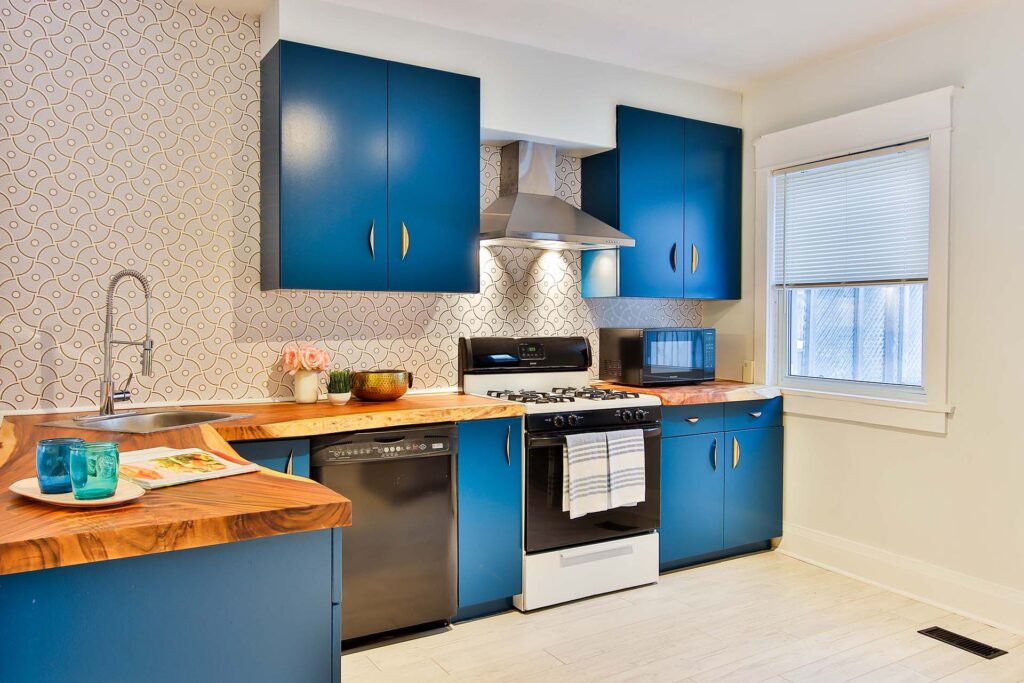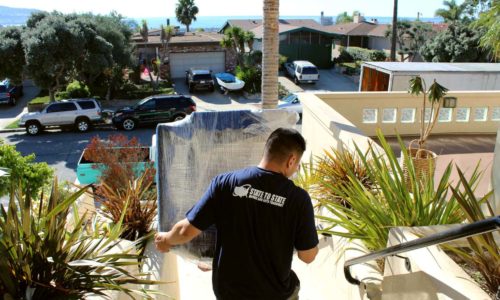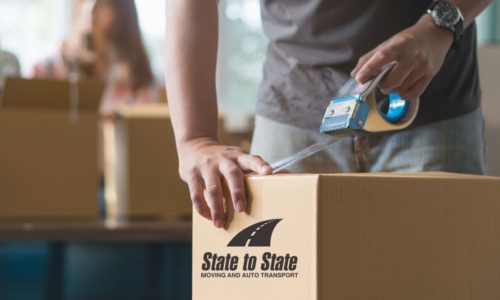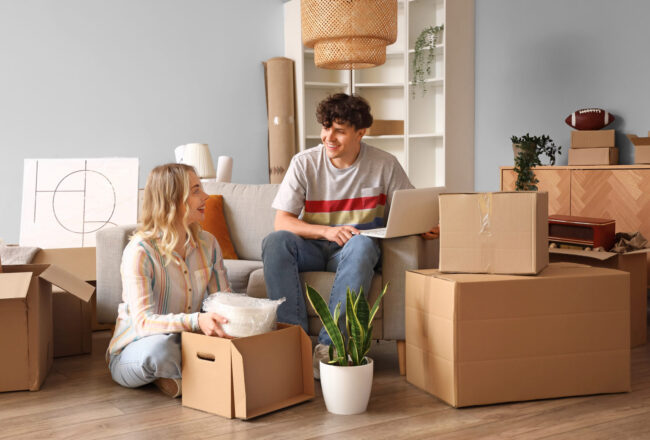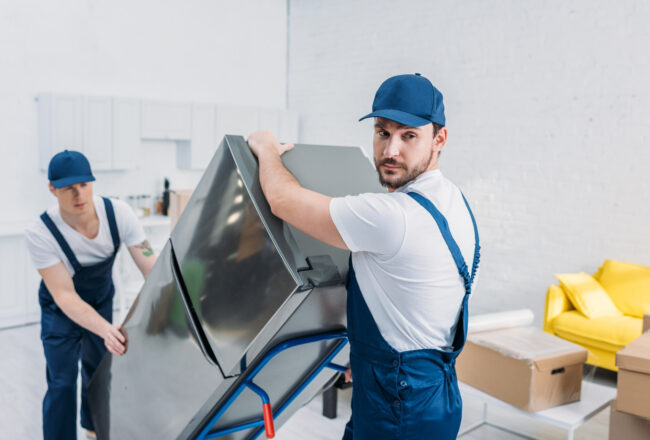Navigating the complexities of a move can be challenging, especially when it comes to sorting out and boxing up a hub of fragile and bulky items. Our guide focuses on how to pack kitchen items for moving, offering expert strategies to protect your valuables. With the right approach, ensuring the safe transit of your possessions is simpler than you think. Let’s explore these effective boxing-up techniques.
How to Pack Kitchen Items for Moving?
When learning how to pack kitchen stuff for moving, you will find that the process involves careful sorting, choosing the right supplies, and employing the right techniques for each item. Start by decluttering and relocating only what you truly need.
Fragile items like glassware require individual wrapping, while heavier items should be packed at the bottom of boxes. Label each crate clearly, and consider hiring professional movers to assist you with appliances or highly valuable items. These steps form the backbone of a successful packing strategy.
Start With Planning Ahead of Time
Starting your boxing-up process well ahead of time is crucial for a stress-free move. Creating a well-organized packing plan allows you to approach the task methodically, reducing the chances of last-minute chaos.
It also ensures that each item is stored securely, minimizing the risk of damage during transit. This foresight not only preserves your belongings throughout the shipping process but also your peace of mind.
Sort Through Your Possessions and Declutter for the Move
Before you start boxing up your belongings, it’s essential to sort them through. Things that are rarely used, duplicates, or those not worth keeping should be disposed of.
Selling items in good condition on platforms like Craigslist not only clears out unnecessary clutter but also lightens your load and the amount of supplies needed for packing. By downsizing your belongings, you’re also making your move more cost-effective and easy.
Check the video below for some tips on how to declutter successfully for your relocation.
Categorize Your Items and Create an Inventory List
Effective inventory management starts with categorizing your possessions. Group your stuff by type – utensils, dishes, appliances, and so forth. Creating an inventory list of these categories helps in several ways.
It makes the packing process more organized, ensuring you don’t overlook anything. This list also aids in tracking your items through your transition, making unpacking easier. Furthermore, in case of any loss or damage, your inventory list serves as a record for insurance purposes. So, make sure that this list is handy for a more controlled and efficient boxing-up experience.
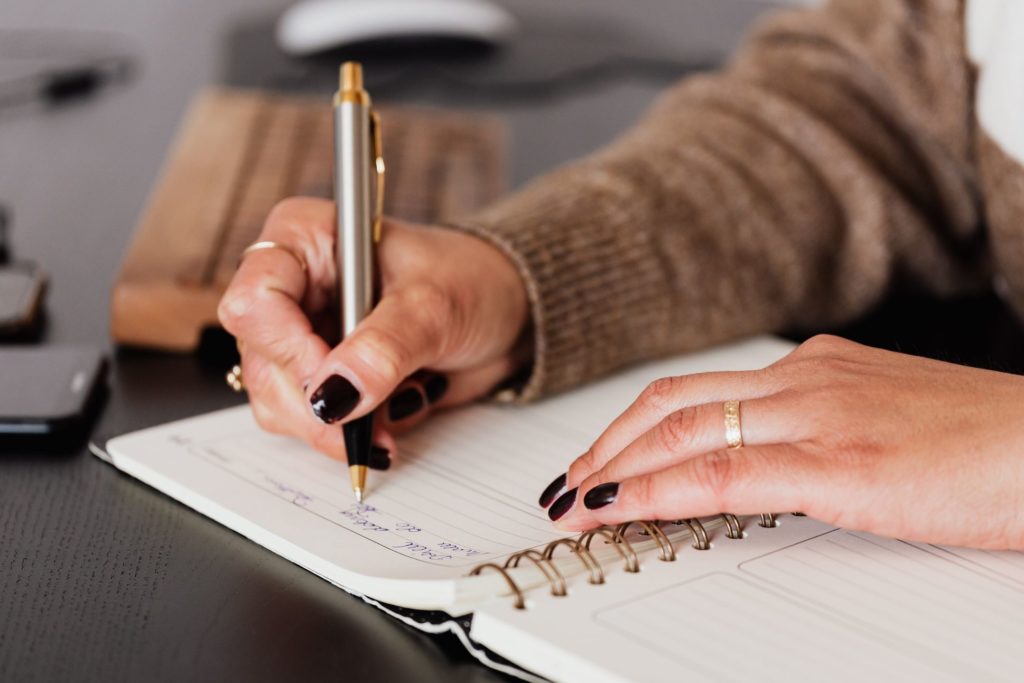
Gather All the Necessary Packing Supplies
Securing the right packing materials is a cornerstone of a successful move. Using appropriate supplies ensures that your kitchen belongings arrive intact at your future location.
Quality materials not only guard against damage but also make the unpacking process more organized and efficient. Here’s a list of different packing materials you’ll need for a smooth and safe relocation experience:
- Sturdy boxes – choose crates of various sizes for different possessions.
- Bubble wrap – essential for wrapping fragile objects.
- Packaging paper – for extra protection and filling gaps.
- Foam peanuts – for cushioning.
- Duct tape – durable tape to seal boxes securely.
- Markers and labels – for labeling each box with contents and handling instructions.
- Stretch wrap – for bundling things and protecting surfaces.
- Furniture pads or blankets – to protect larger objects.
- Specialty boxes – such as dish or glassware packs.
- Zip bags – for small parts and loose things.
- Scissors or a box cutter – for easy packing and unpacking.
Carefully Box Up Your Breakables
Fragile items such as your glass collection, plates, or precious china require a careful approach to ensure their safety. Begin by lining your boxes with a layer of bubble wrap or packing paper for added cushioning. Wrap each breakable item individually, starting with larger pieces. Use enough bubble wrap to cover each item completely, securing the wrapping with tape.
For extra fragile things, consider double wrapping. Place the heaviest items at the bottom of the crate and lighter ones on top. Fill any gaps between objects with crumpled packing paper or foam peanuts to prevent movement inside the box.
Once packed, gently shake the box to ensure there’s no movement. If you hear items shifting, add more cushioning. Finish this process by placing “Fragile” and “This Side Up” stickers to inform your state-to-state movers of the delicate contents.
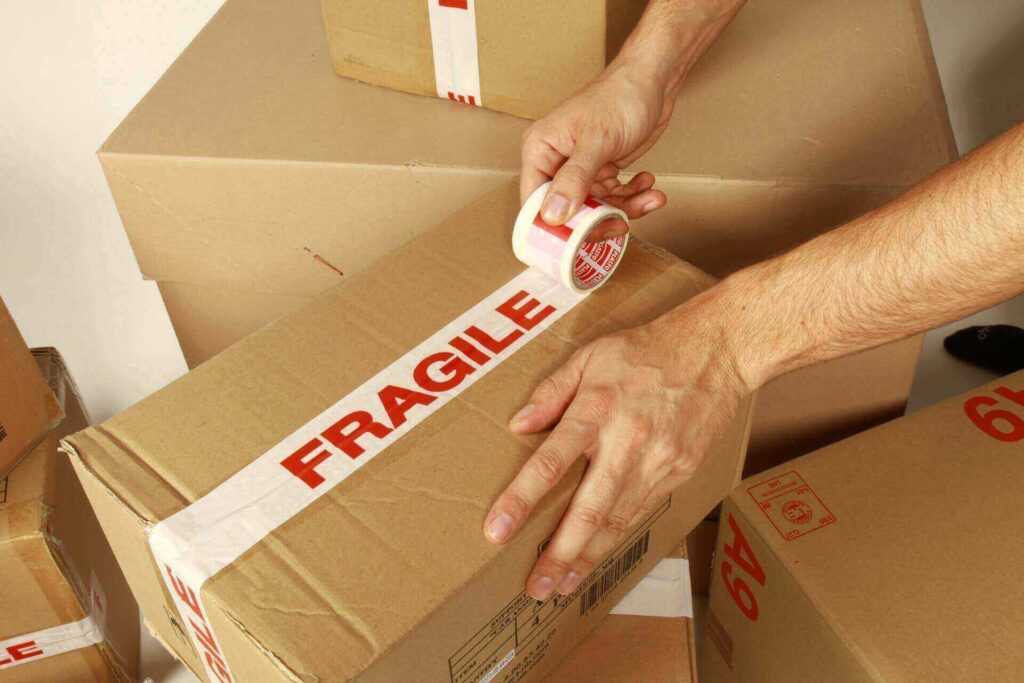
Handle Your Bulky Kitchen Appliances Properly
If you are asking yourself, “How to pack my kitchen items for moving?” know that bulkier objects require special attention. Firstly, ensure all appliances are clean and dry. Defrost your refrigerators and freezers at least 24 hours before moving day.
Disconnect and secure gas lines for stoves, and tape down any movable parts or doors. Wrap them in moving blankets or similar protective coverings to prevent scratches and dents. When relocating a dishwasher, drain all water and secure the door. For built-in ovens, remove or secure racks and any detachable parts to prevent detaching and damage while in transit.
For smaller electronic appliances like blenders, mixers, toasters, and coffee makers, start by cleaning and drying them as well. If you have their original packaging, use them, as they offer the best protection. Otherwise, wrap each object in bubble wrap and a blanket. Place them in appropriately sized crates filled with ample cushioning to prevent their movement.
Secure Cords and Removable Parts to Prevent Them From Getting Damaged
Wrap power cords with rubber bands or cable ties and attach them to the appliance, ensuring they don’t dangle and get caught. For appliances with removable parts, such as mixer attachments or blender blades, remove these parts and pack them separately. Wrap each piece individually to prevent scratches or breakage.
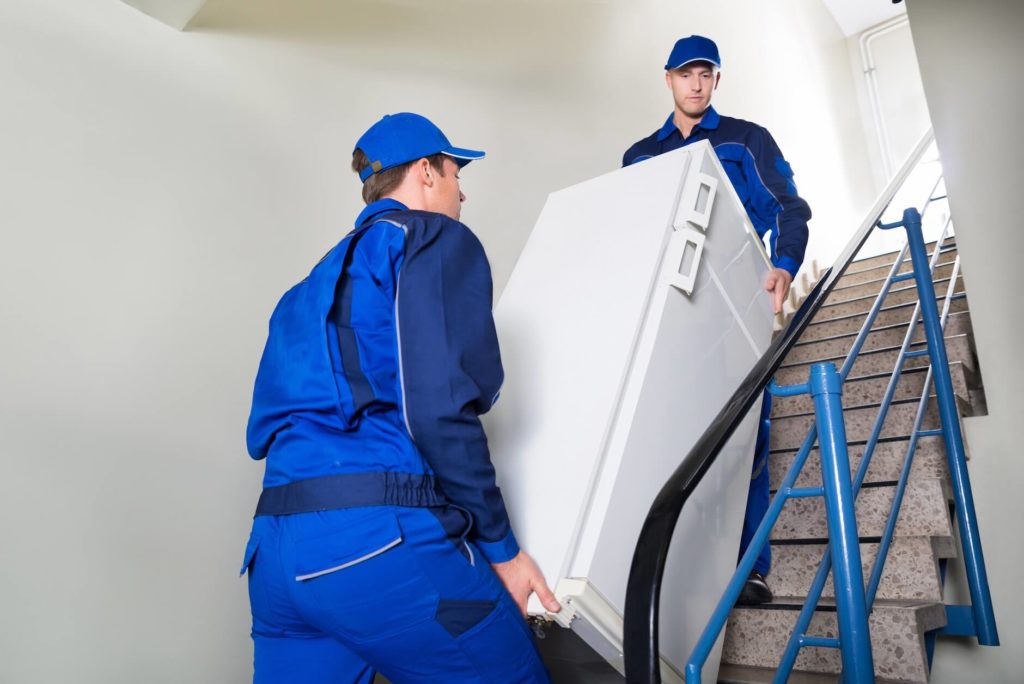
Utilize Efficient Packing Techniques for Your Pots and Pans
Packing pots and pans efficiently is crucial for maximizing space and ensuring their safety when moving interstate. A great technique is nesting your objects. Start with the largest pot and place smaller ones inside it, like a set of Russian dolls. To prevent scratches, place a layer of packaging paper or a thin cloth between each pot or pan.
For lids, wrap them individually and slide them sideways between the nested stuff, or, if there’s enough room, put them on top of the nested set. Utilize their interior spaces as added storage by filling them with small kitchen gadgets or spices. This method not only saves space but also provides additional padding for your cookware.
Safe Ways to Store Cutlery and Sharp Objects for Transport
Safety is paramount when storing cutlery and sharp tools for long-distance moving. For knives, use knife guards if available. These slip onto the blade and provide a safe barrier against the sharp edge.
If knife guards aren’t available, an alternative is to wrap each knife in a dish towel. Secure the towel with rubber bands or tape, ensuring the sharp edge is fully covered. Once the knives are securely wrapped, bundle them and place them in a sturdy box.
For other cutlery, like forks and spoons, wrap them in bundles with packaging paper or use a specialized crate with dividers. This will keep them organized and prevent any potential accidents when unpacking.
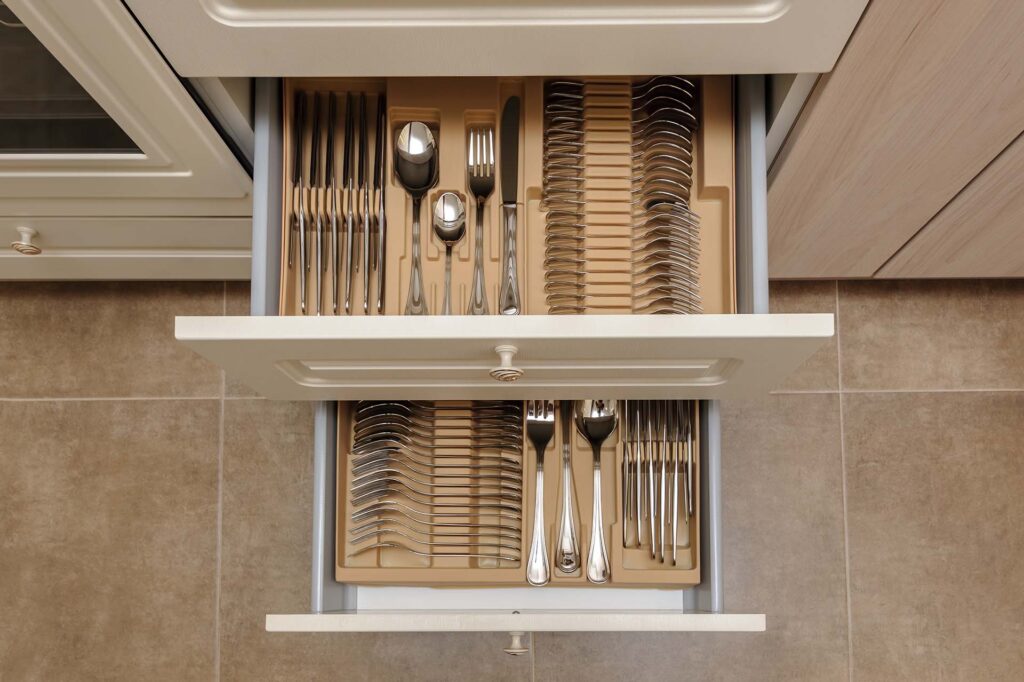
Don’t Forget to Sort Through Your Perishable and Non-Perishable Foods
Moving state-to-state necessitates good preparation, and it’s essential to sort through your kitchen cabinets. Perishable foods, such as fresh produce, dairy products, and meats, should be consumed, given away, or properly disposed of before your relocation. These items won’t survive a long trip and can create a mess if they spoil. Plan meals leading up to your relocation to use up these supplies.
For non-perishable foods, like canned goods, pasta, and unopened snacks, storing them properly is important. Since most movers won’t move food to prevent pest infestations, these should be transported in your vehicle. Pack these in sturdy containers and ensure that everything is well-sealed. Consider donating excess stuff to a local food bank, reducing the load you need to carry while helping those in need.
Give Some Special Care to Your Specialty Items
Specialty items, such as wine collections, require particular attention when boxing up. If you’re interstate moving, keep in mind that wine is sensitive to temperature changes and movement. Ideally, these bottles should be transported in a climate-controlled environment.
For short trips, insulated wine shipping boxes or coolers can suffice. Each bottle should be individually wrapped in bubble wrap to prevent clinking and breakage. Store the bottles on their sides to keep the corks moist, just as you would in a wine rack.
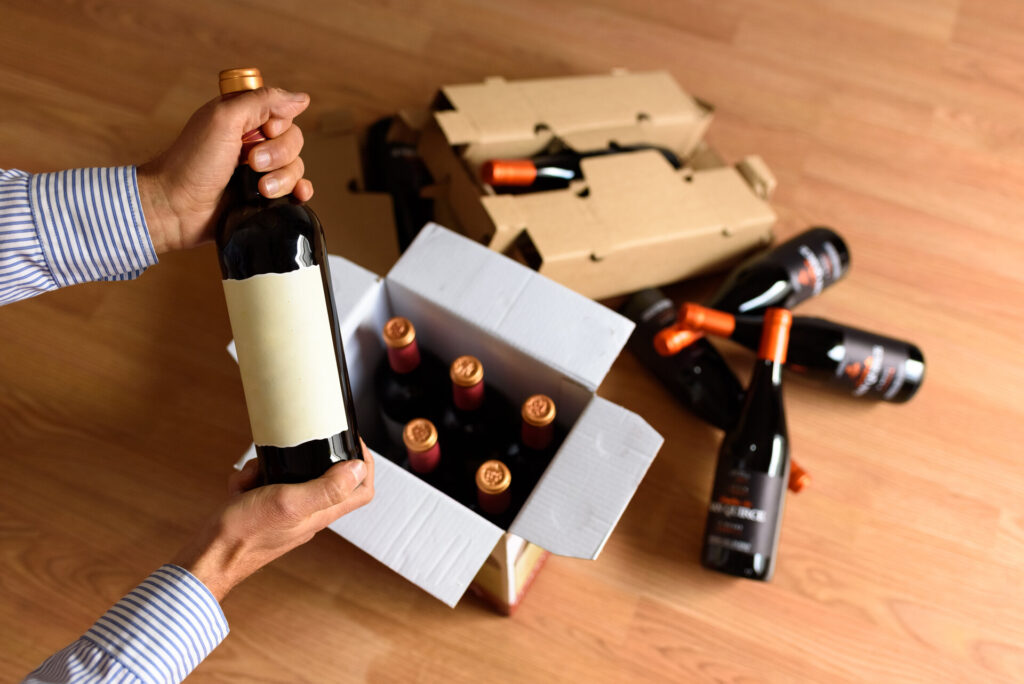
Don’t forget to Label Your Crate for Efficient Handling and Unpacking
Clear and descriptive labeling not only aids in the careful handling of your items but also streamlines the unpacking process. Each label should include a brief description of the contents and the designated room in your new home. This makes it easier for movers to place boxes in the correct areas, reducing your workload when it comes time to unpack.
You Can Always Create Your Own Labels
For a more organized process, consider creating your own labeling system. Color coding is an effective method. Assign a different color to each category and use corresponding colored stickers or markers on the boxes. This visual system allows for quick identification and sorting. You can also create table stickers. These provide a checklist on the outside of the box, allowing you to tick off items as you store them away.
When labeling, be detailed about the contents without making the label too cluttered. Include essential details like “Kitchen” or “Glassware.” Tailor your labeling system to what makes sense for you, but ensure that it’s clear and functional for both you and your movers.

Hire State2State Movers for a Smooth Relocation Experience
Boxing up your kitchen possessions can be a time-consuming and intricate task, but with professional help, it doesn’t have to be overwhelming. At State2State Movers, we understand the intricacies and challenges that relocation entails. We are proud to offer comprehensive moving services that are designed to ensure that every item is transported safely and efficiently.
Our packing services are equally thorough, utilizing the best materials and techniques to safeguard your belongings. From your delicate glassware to heavy appliances, our experienced team ensures everything is boxed up with the utmost care. Don’t hesitate to contact us today and book our team for your interstate relocation. Let us turn this significant life event into a pleasant and breezy experience.
FAQ
How to Pack Plastic Kitchen Items for Moving?
Pack these things by nesting similar objects together. Use medium-sized boxes, as plastic objects can be bulky but not necessarily heavy. Wrap individual pieces in packing paper if they’re fragile, and fill gaps with bubble wrap or crumpled paper to prevent movement during transit.
What Is the Best Way to Pack Dishes for Moving?
The best way to box up dishes is by wrapping each piece individually in packaging paper or bubble wrap. Place them vertically in sturdy boxes lined with cushioning material. Fill any gaps with crumpled paper to prevent movement and label the boxes as “Fragile.”
How Do You Pack Cookware for Moving?
Pack cookware by nesting pots and pans together, separating each with a layer of foam sheet. Secure lids separately and wrap handles if they are fragile. Use sturdy crates and fill any remaining space with cushioning to keep items in place.

